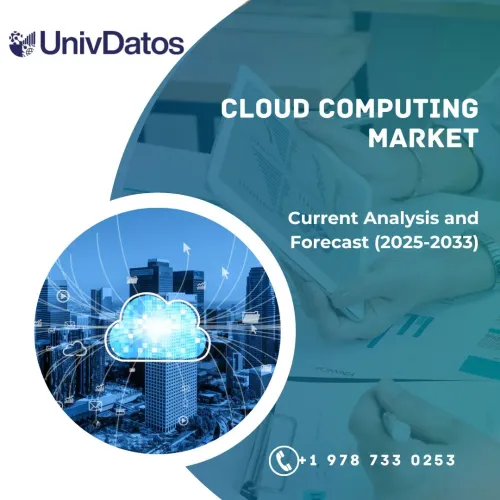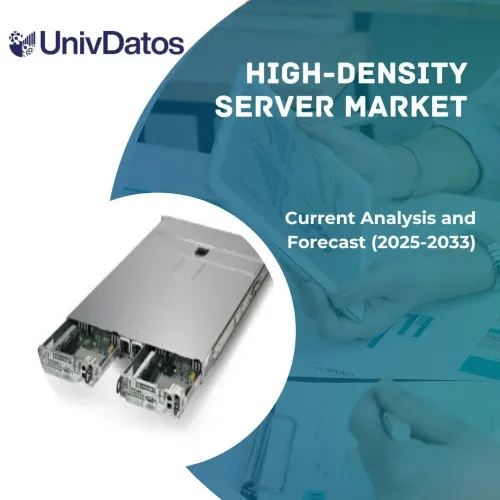- Startseite
- Über uns
- Industrie
- Dienstleistungen
- Lesen
- Kontaktieren Sie uns
Markt für modulare Rechenzentren: Aktuelle Analyse und Prognose (2021-2027)
Schwerpunkt auf Komponenten (Lösungen und Services); Organisationsgröße (Großunternehmen und KMU); Branche (Banken und Finanzdienstleistungen, Informations- und Kommunikationstechnologie, Konsumgüter und Einzelhandel, Fertigung, Gesundheitswesen, Behörden und Sonstige); und Region/Land

Es wird erwartet, dass der globale Markt für modulare Rechenzentren im Zeitraum 2021-2027 eine CAGR von rund 15 % verzeichnen wird. Der Markt wird aufgrund der steigenden Nachfrage nach schnell einsetzbaren und skalierbaren Rechenzentren sowie des Aufschwungs bei der Einführung von Cloud-Diensten durch Unternehmen angekurbelt. Darüber hinaus wird die steigende Nachfrage nach umweltfreundlichen Rechenzentren, gefolgt von der steigenden Nachfrage nach energieeffizienten Lösungen, die Branchenlandschaft positiv ankurbeln. Modulare Rechenzentren sind Module und Abteile, die an einem Rechenzentrumsstandort gemäß Industriestandards betrieben werden. Das gesamte Rechenzentrum ist in verschiedene separate Bereiche unterteilt. Jeder Bereich ist individuell auf seine Größe, aktuelle Auslastung, Konfiguration usw. gemäß einheitlichen Standards ausgelegt. Die Kühl-, Stromversorgungs- und Managementsysteme modularer Rechenzentren sind partitioniert und modularisiert, so dass sie unabhängig voneinander arbeiten können, ohne sich gegenseitig zu stören und Ressourcen zu teilen. Modulare Rechenzentren bieten eine Reihe von Vorteilen, wie z. B. kürzere Bereitstellungszeiten, geringe Betriebskosten, Mobilität, Kompatibilität, Skalierbarkeit, Flexibilität und andere. Daher sind modulare Rechenzentren für Organisationen vorteilhafter als herkömmliche Rechenzentren.
Dell Inc., Hewlett Packard Enterprise Development LP, International Business Machines Corporation, Baselayer Technology LLC, Vertiv Group Corp., Cannon Technologies Ltd., Box Modul AB, ScaleMatrix Holdings Inc., Schneider Electric SE, BladeRoom Group Ltd. sind einige der wichtigsten Akteure auf dem Markt. Mehrere M&A-Transaktionen zusammen mit Partnerschaften wurden von diesen Akteuren durchgeführt, um Kunden mit High-Tech- und innovativen Produkten/Technologien zu unterstützen.
In dem Bericht präsentierte Erkenntnisse
„Unter den Komponenten hielt das Lösungssegment im Jahr 2020 einen herausragenden Marktanteil“
Basierend auf der Komponente ist der Markt in Lösungen und Dienstleistungen unterteilt. Davon hielt das Lösungssegment im Jahr 2020 einen herausragenden Anteil am globalen Markt für modulare Rechenzentren und wird voraussichtlich im Prognosezeitraum ein robustes Wachstum verzeichnen. Dies ist auf die wachsende Akzeptanz modularer Rechenzentrumslösungen, die von wichtigen Marktteilnehmern angeboten werden, und die mit modularen Rechenzentren verbundenen Vorteile zurückzuführen, wie z. B. kürzere Bereitstellungszeiten, geringe Betriebskosten, Mobilität, Kompatibilität, Skalierbarkeit, Flexibilität und andere.
„Unter den Organisationsgrößen hielten große Organisationen im Jahr 2020 einen herausragenden Marktanteil“
Basierend auf der Organisationsgröße wird der Markt in Großunternehmen und KMU unterteilt. Davon erfassten die Großunternehmen im Jahr 2020 einen signifikanten Anteil am globalen Markt für modulare Rechenzentren und werden voraussichtlich im Prognosezeitraum eine robuste Wachstumsrate verzeichnen. Modulare Rechenzentren helfen Unternehmen bei einfachen und schnellen Implementierungen und unterstützen sie so bei der Erweiterung ihrer bestehenden Rechenzentren, anstatt ein neues zu errichten. Sie sparen viel Zeit und reduzieren die Kosten, die mit dem Bau und der Wartung verbunden sind.
„Nordamerika wird im Prognosezeitraum ein signifikantes Wachstum verzeichnen“
Nordamerika hielt im Jahr 2020 einen herausragenden Anteil am globalen Markt für modulare Rechenzentren und wird voraussichtlich im Prognosezeitraum eine herausragende Wachstumsrate aufweisen. Dies kann auf die Präsenz führender Anbieter modularer Rechenzentren und die florierende IT- und Telekommunikationsbranche zurückgeführt werden. Darüber hinaus befeuert ein Anstieg der Investitionen wichtiger Akteure sowie der Regierung in die Entwicklung des innovativen vorgefertigten Rechenzentrums das Wachstum des Marktes. In Ländern wie den USA und Kanada gibt es zahlreiche staatliche Initiativen, um die Einführung moderner modularer Rechenzentrumstechniken zur Maximierung der Produktivität zu fördern.
Gründe für den Kauf dieses Berichts:
- Die Studie umfasst eine Marktgrößen- und Prognoseanalyse, die von authentifizierten wichtigen Branchenexperten validiert wurde.
- Der Bericht präsentiert einen schnellen Überblick über die Gesamtleistung der Branche auf einen Blick.
- Der Bericht enthält eine eingehende Analyse prominenter Branchenkollegen mit einem primären Fokus auf wichtige Geschäftsfinanzen, Produktportfolio, Expansionsstrategien und aktuelle Entwicklungen.
- Detaillierte Untersuchung von Treibern, Einschränkungen, wichtigsten Trends und Chancen, die in der Branche vorherrschen.
- Die Studie umfasst umfassend den Markt in verschiedenen Segmenten.
- Detaillierte regionale Analyse der Branche.
Anpassungsoptionen:
Der globale Markt für modulare Rechenzentren kann je nach Bedarf oder einem anderen Marktsegment weiter angepasst werden. Darüber hinaus versteht UMI, dass Sie möglicherweise Ihre eigenen Geschäftsanforderungen haben. Zögern Sie daher nicht, sich mit uns in Verbindung zu setzen, um einen Bericht zu erhalten, der Ihren Anforderungen entspricht.
Inhaltsverzeichnis
Forschungsmethodik für die Marktanalyse modularer Rechenzentren (2021-2027)
Die Analyse des historischen Marktes, die Schätzung des aktuellen Marktes und die Prognose des zukünftigen Marktes des globalen Marktes für modulare Rechenzentren waren die drei wichtigsten Schritte, die unternommen wurden, um die Einführung modularer Rechenzentren in wichtigen Regionen weltweit zu erstellen und zu analysieren. Um die historischen Marktzahlen zu sammeln und die aktuelle Marktgröße zu schätzen, wurde eine umfassende Sekundärforschung durchgeführt. Zweitens wurden zahlreiche Erkenntnisse und Annahmen berücksichtigt, um diese Erkenntnisse zu validieren. Darüber hinaus wurden umfassende Primärinterviews mit Branchenexperten entlang der Wertschöpfungskette des globalen Marktes für modulare Rechenzentren durchgeführt. Nach Annahme und Validierung der Marktzahlen durch Primärinterviews haben wir einen Top-Down-/Bottom-Up-Ansatz angewendet, um die vollständige Marktgröße zu prognostizieren. Danach wurden Marktaufschlüsselungs- und Datentriangulationsmethoden angewendet, um die Marktgröße von Segmenten und Untersegmenten der Branche zu schätzen und zu analysieren. Die detaillierte Methodik wird im Folgenden erläutert:
Analyse der historischen Marktgröße
Schritt 1: Eingehende Untersuchung von Sekundärquellen:
Es wurde eine detaillierte Sekundärstudie durchgeführt, um die historische Marktgröße des Marktes für modulare Rechenzentren durch interne Unternehmensquellen wie zu erhaltenJahresberichte und Finanzberichte, Leistungspräsentationen, Pressemitteilungen usw.und externe Quellen einschließlichJournale, Nachrichten und Artikel, Veröffentlichungen der Regierung, Veröffentlichungen der Wettbewerber, Branchenberichte, Datenbanken von Drittanbietern und andere glaubwürdige Veröffentlichungen.
Schritt 2: Marktsegmentierung:
Nachdem wir die historische Marktgröße des Marktes für modulare Rechenzentren ermittelt haben, führten wir eine detaillierte Sekundäranalyse durch, um historische Markteinblicke und Marktanteile für verschiedene Segmente und Untersegmente für wichtige Regionen zu sammeln. Zu den wichtigsten Segmenten, die in dem Bericht enthalten sind, gehören Komponente, Organisationsgröße und Branche. Darüber hinaus wurden Analysen auf Länderebene durchgeführt, um die Gesamtakzeptanz von Testmodellen in dieser Region zu bewerten.
Schritt 3: Faktorenanalyse:
Nachdem wir die historische Marktgröße verschiedener Segmente und Untersegmente ermittelt hatten, führten wir eine detaillierteFaktorenanalysedurch, um die aktuelle Marktgröße des Marktes für modulare Rechenzentren zu schätzen. Darüber hinaus führten wir eine Faktorenanalyse unter Verwendung abhängiger und unabhängiger Variablen wie verschiedene Komponenten, Organisationsgröße und Branche modularer Rechenzentren durch. Eine gründliche Analyse wurde für Angebots- und Nachfrageszenarien unter Berücksichtigung von Top-Partnerschaften, Fusionen und Übernahmen, Geschäftserweiterungen und Produkteinführungen im Marktsegment für modulare Rechenzentren auf der ganzen Welt durchgeführt.
Aktuelle Marktschätzung & Prognose
Aktuelle Marktgrößenbestimmung:Basierend auf verwertbaren Erkenntnissen aus den obigen 3 Schritten sind wir auf die aktuelle Marktgröße, die wichtigsten Akteure auf dem globalen Markt für modulare Rechenzentren und die Marktanteile der Segmente gestoßen. Alle erforderlichen prozentualen Anteile, Aufteilungen und Marktunterteilungen wurden unter Verwendung des oben genannten Sekundäransatzes bestimmt und durch Primärinterviews verifiziert.
Schätzung & Prognose:Für die Marktschätzung und -prognose wurden den verschiedenen Faktoren, einschließlich Treibern und Trends, Einschränkungen und Chancen, die den Stakeholdern zur Verfügung stehen, Gewichte zugewiesen. Nach der Analyse dieser Faktoren wurden relevante Prognosetechniken, d. h. Top-Down-/Bottom-Up-Ansatz, angewendet, um die Marktprognose für 2027 für verschiedene Segmente und Untersegmente in den wichtigsten Märkten weltweit zu erstellen. Die Forschungsmethodik zur Schätzung der Marktgröße umfasst:
- Die Marktgröße der Branche in Bezug auf den Umsatz (USD) und die Akzeptanzrate des Marktes für modulare Rechenzentren in den wichtigsten Märkten im Inland
- Alle prozentualen Anteile, Aufteilungen und Unterteilungen von Marktsegmenten und Untersegmenten
- Wichtige Akteure auf dem globalen Markt für modulare Rechenzentren in Bezug auf die angebotenen Lösungen. Außerdem die Wachstumsstrategien, die von diesen Akteuren angewendet werden, um im schnell wachsenden Markt zu konkurrieren
Marktgrößen- und -anteilsvalidierung
Primärforschung:Es wurden eingehende Interviews mit den wichtigsten Meinungsführern (KOLs) geführt, darunter Top-Level-Führungskräfte (CXO/VPs, Vertriebsleiter, Marketingleiter, Betriebsleiter und Regionalleiter, Ländermanager usw.) in den wichtigsten Regionen. Die Ergebnisse der Primärforschung wurden dann zusammengefasst und eine statistische Analyse durchgeführt, um die aufgestellte Hypothese zu beweisen. Die Ergebnisse der Primärforschung wurden mit den Sekundärergebnissen konsolidiert, wodurch Informationen in verwertbare Erkenntnisse umgewandelt wurden.
Aufteilung der primären Teilnehmer in verschiedenen Regionen

Markttechnik
Die Daten-Triangulationstechnik wurde eingesetzt, um die gesamte Marktabschätzung abzuschließen und präzise statistische Zahlen für jedes Segment und Untersegment des globalen modularen Rechenzentrumsmarktes zu erhalten. Die Daten wurden nach der Untersuchung verschiedener Parameter und Trends in den Bereichen Komponente, Organisationsgröße und Industrie auf dem globalen Markt für modulare Rechenzentren in mehrere Segmente und Untersegmente aufgeteilt.
Das Hauptziel der Global Modular Data Center Market Study
Die aktuellen und zukünftigen Markttrends des globalen Marktes für modulare Rechenzentren wurden in der Studie ermittelt. Investoren können strategische Einblicke gewinnen, um ihre Investitionsentscheidungen auf der Grundlage der in der Studie durchgeführten qualitativen und quantitativen Analysen zu treffen. Aktuelle und zukünftige Markttrends wurden ermittelt, um die Gesam Attraktivität des Marktes auf regionaler Ebene zu bestimmen und eine Plattform für die Industrieteilnehmer zu schaffen, um den unerschlossenen Markt zu nutzen und vom First-Mover-Vorteil zu profitieren. Weitere quantitative Ziele der Studien umfassen:
- Analyse der aktuellen und prognostizierten Marktgröße des Marktes für modulare Rechenzentren in Bezug auf den Wert (USD). Außerdem Analyse der aktuellen und prognostizierten Marktgröße verschiedener Segmente und Untersegmente
- Zu den Segmenten in der Studie gehören die Bereiche Komponente, Organisationsgröße und Industrie.
- Definition und Analyse des regulatorischen Rahmens für die modulare Rechenzentrum Markt Industrie.
- Analyse der Wertschöpfungskette, die mit der Präsenz verschiedener Intermediäre verbunden ist, zusammen mit der Analyse des Kunden- und Wettbewerbsverhaltens der Industrie.
- Analyse der aktuellen und prognostizierten Marktgröße des Marktes für modulare Rechenzentren für die wichtigsten Regionen.
- Zu den wichtigsten Ländern der in dem Bericht untersuchten Regionen gehören Asien-Pazifik, Europa, Nordamerika und der Rest der Welt.
- Unternehmensprofile des Marktes für modulare Rechenzentren und die Wachstumsstrategien, die von den Marktteilnehmern angewendet werden, um sich in dem schnell wachsenden Markt zu behaupten
- Detaillierte Analyse der Branche auf regionaler Ebene
Verwandt Berichte
Kunden, die diesen Artikel gekauft haben, kauften auch










